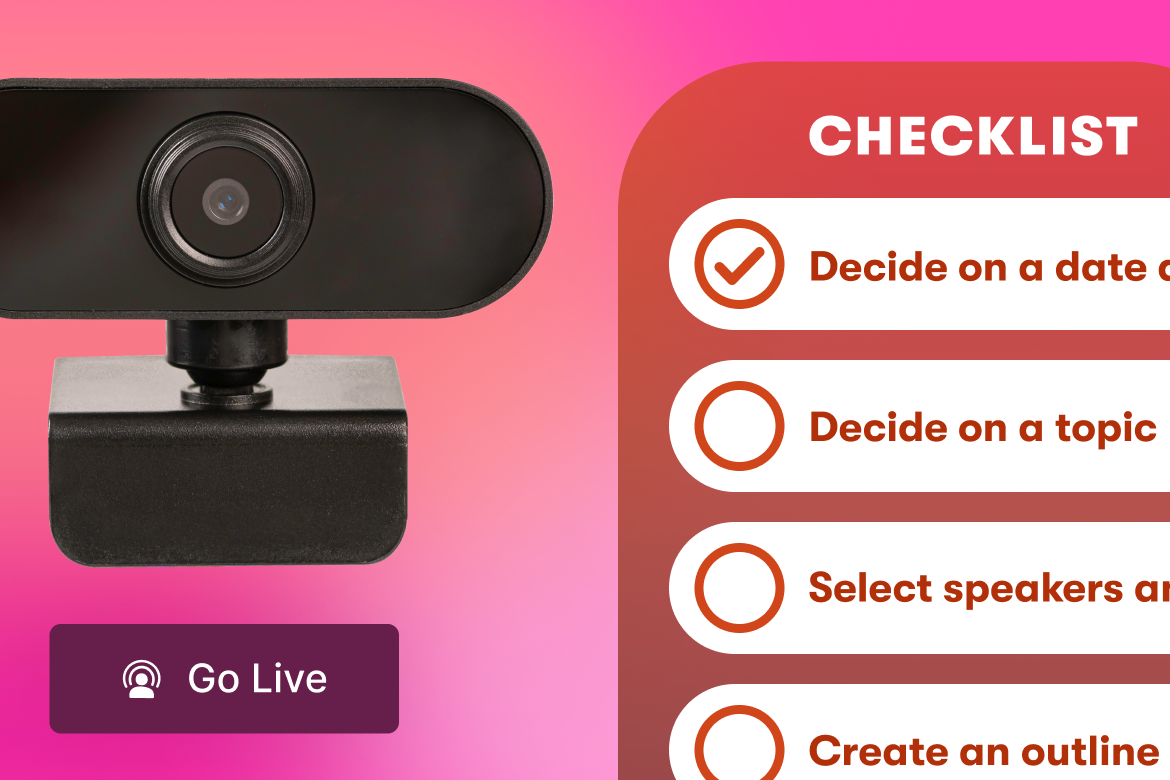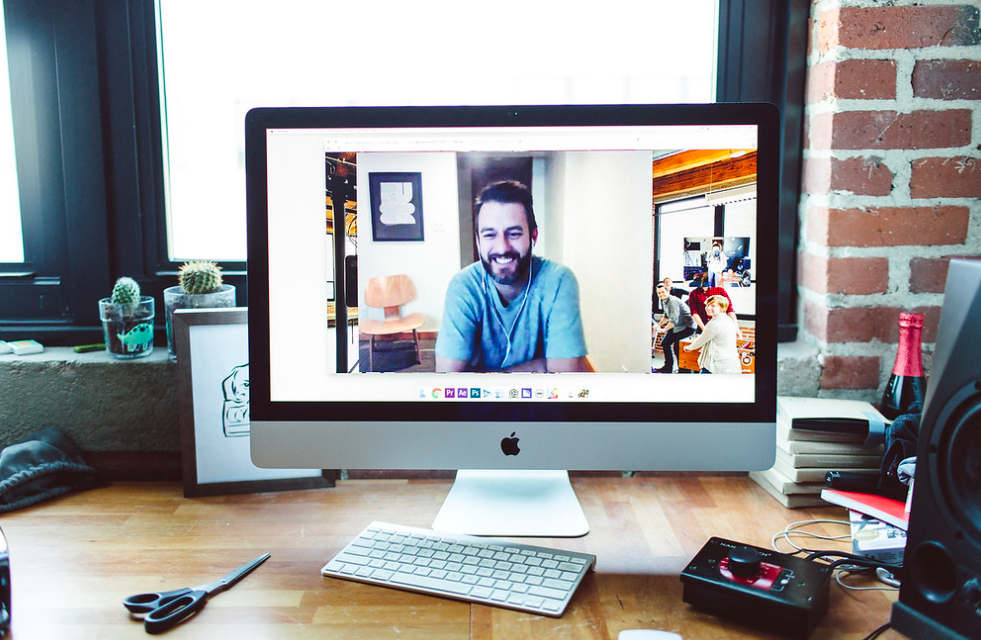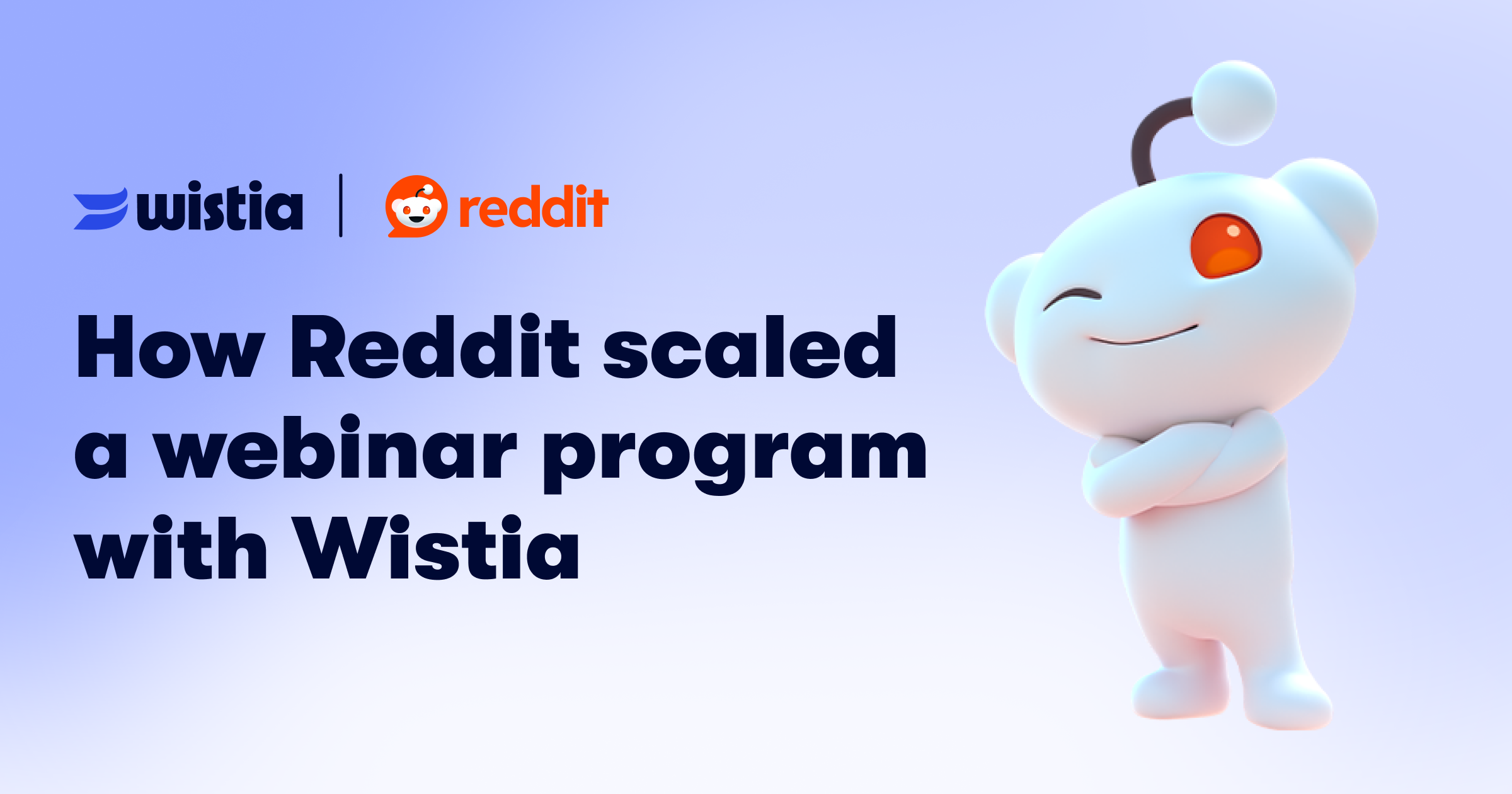Brand Videos: The Key to Great Video Marketing in 2025
Discover why brand videos are the perfect way to connect with your audience and build awareness — and learn how to make amazing brand videos.
July 6, 2023
Topic tags
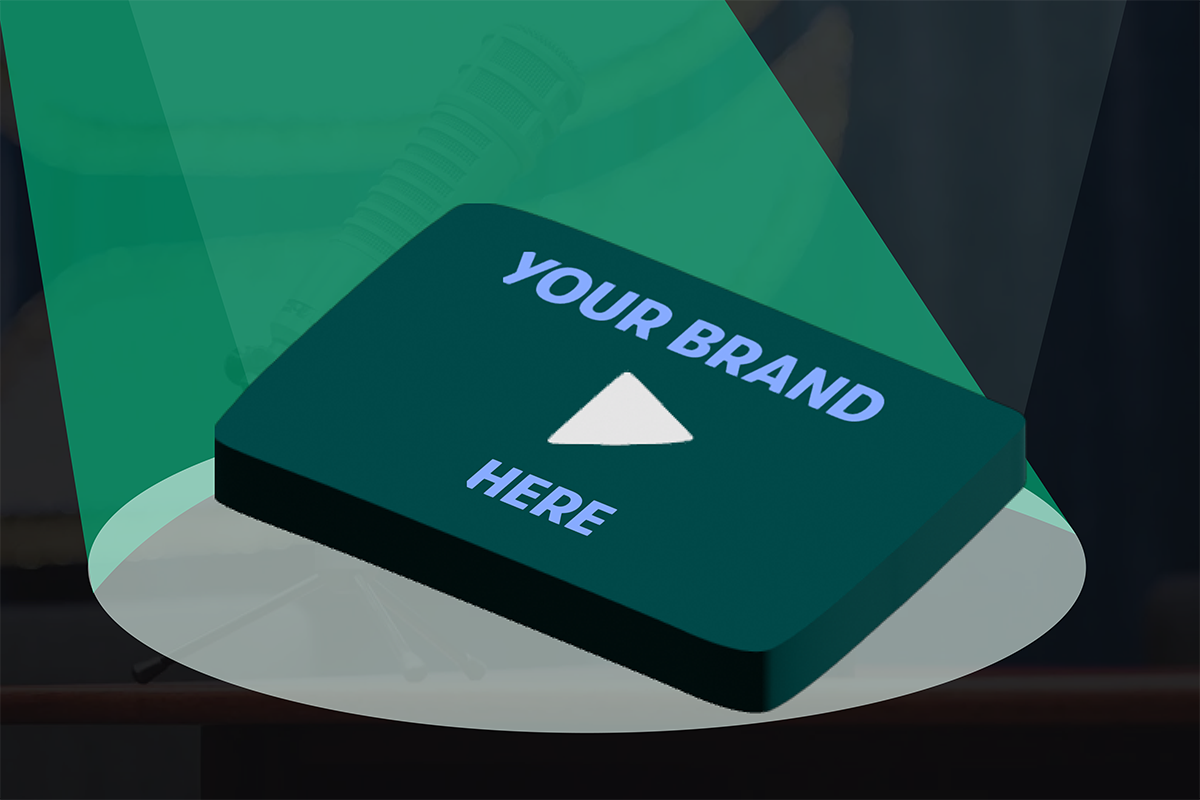
Looking for a powerful way to share your brand’s story and connect with your audience? Brand videos could be your golden ticket.
Our 2025 State of Video Report found that over one in five people who come across a video choose to watch it. Pair that with the fact that 82% of people have been convinced to buy a product or service after watching a brand’s video, and you’ve got the perfect reason to start making videos for your brand.
“82% of people have been convinced to buy a product or service after watching a brand’s video.”
We’re here to break down what brand videos are, uncover their benefits, and spark your inspiration with some fantastic examples. Let’s get started!
What is a brand video?
A brand video is a type of video content that focuses on your company’s core values, mission, and personality.
Think of it as a window into your company’s soul. It’s not about pushing products or services, but it’s about showing what makes your company tick — your core values, your mission, and what sets you apart from your competitors.
The main purpose of brand videos is to connect with your audience on an emotional level and make your brand feel familiar and trustworthy. A good brand video is a mix of smart strategy and engaging storytelling that educates and resonates with your audience.
Brand videos vs. marketing videos
Branded video content and marketing videos overlap in many ways. Both help shape a company and serve as core parts of your marketing efforts. But there are a few key differences.
Brand videos focus on who your company is by showcasing its persona. This type of video grabs folks’ attention by giving them a glimpse into who you are, your values, your long-term goals, and how your product brings all these things together. Check out these formats you might consider for your brand videos:
- Branded narrative story
- Trailers
- Mini documentary-style videos
- Clips or bite-sized video content
- Employee onboarding series
- Ads
- Episodic content
Even though marketing videos should still capture your brand’s voice and tone, they place more emphasis on getting viewers to take action. Their goal is to promote and sell your product. Examples include product videos, advertisements, how-to videos, case studies, and webinars.
Brand videos vs. ads
The distinction between a brand video and an ad can sometimes blur, especially when a brand video is used in an advertising context.
The best way to differentiate between a brand video and an ad is to look at the end goal: Is its purpose to create a connection with the audience and build brand recognition, trust, and loyalty, or is it to prompt folks to buy something?
4 benefits of brand videos
1. Foster brand loyalty among your audience
When done well, a brand video can evoke an emotional response and foster a human-to-human connection with viewers.
Customers are eager to get to know your team and company! They want to see the faces behind their favorite products. Knowing the brand’s personality is one thing, but who are the people bringing it to life?
You don’t need professional actors to make good brand videos. All you need is a passionate team and a great video marketing tool.
Give your audience a glimpse into what your team is all about. Do a social media takeover to give your followers a day-in-the-life video of one of your teammates, or you can simply interview your team members. You’re inviting folks to get to know your company’s personality with the aim of building valuable loyalty and trust.
2. Build brand awareness
By artfully capturing your brand’s unique identity and offering viewers an inside look at your core values, brand videos can leave a lasting impression on your audience and help create a deeper connection with them. This connection, in turn, fosters brand affinity and makes it more likely that your audience will remember your brand and choose it over others.
Think about how you want folks to remember your brand. Focus on the who and why behind your brand. Now, wrap this sentiment up into a compelling story that evokes an emotional response from your viewers. The more they can connect with your brand, the better they’ll remember it.
To make an effective brand video, think about your brand design. Videos are visual, which means it’s worth spending a little extra time considering how you want folks to experience your brand. Here’s where you can have some fun with it — color grading, animations, scripts, you name it! If your brand were a person, what would they wear? How would they talk? The more you experiment with these video elements, the more your brand stands out.
3. Showcase your company’s culture, values, and vision
Your company culture and vision drive your product. They’re part of everything you do, so shine the spotlight on them in your brand videos! Your company’s values and vision help make up the “personality” behind your brand. They let folks know what big problems you’re aiming to solve with your product and how you’re doing it in an innovative way.
Take the time to explore a common issue in your industry. Talk to subject matter experts and folks at your company to get their take before diving into how you’re addressing it. How are your company values captured in everything you do? Why does this make you a reliable and trustworthy brand that your audience can rely on?
4. Generate excitement for your brand
Brand videos tap into human emotions and curiosity and utilize storytelling, visuals, and exclusive content to drum up enthusiasm and interest around your brand.
There are many different types of videos you can create to get folks pumped about your brand. We’ve got several ideas:
- Product launch videos to build anticipation and create a buzz around your new product
- “About us” videos to get folks to want to learn more about your brand
- Customer testimonials to foster trust and excitement through real, relatable experiences
- Event recaps to share the energy and excitement of live events
- Brand milestone videos to create a sense of camaraderie and shared achievement
Social media is one of the best ways to distribute these videos. That said, for social media content to get traction, it has to catch a user’s attention immediately. Lucky for you, we put together a social media video guide that can help you create scroll-stopping videos (and much more)!
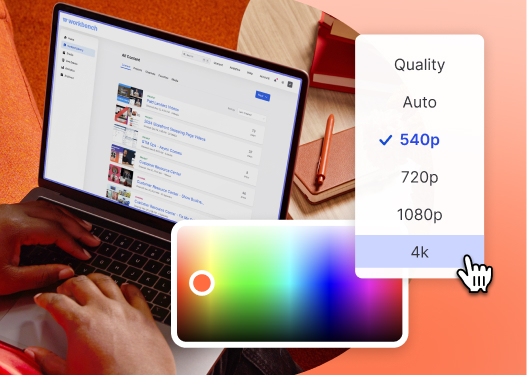
All-in-one Video Platform
Create, Edit, And Host Videos
5 impactful brand video examples
1. About us: BambooHR
One of the best ways to give folks a high-level overview of who you are as a brand is with an “about us” video. BambooHR did just that:
This video sends a core message: People are the key to BambooHR’s success. It features team members sharing stories and insights, and it offers an authentic glimpse into the company’s work culture.
Viewers get to meet the faces behind the brand and see their daily work, which humanizes the company beyond just a logo and story. Through the music and narrative that runs through each shared story, BambooHR captures its brand essence, sparking emotions that foster trust, relatability, and loyalty.
2. Product development story: Casper
To connect with and educate their audience, Casper creates short videos that provide a glimpse of their approach to product development. Check out this example:
Casper’s team begins by sharing their general philosophy: helping customers enjoy a better night’s sleep. They quickly move on to address a common issue many face: difficulty sleeping due to being too hot or too cold. And finally, they reveal how they engineered their products to solve the problem.
In just under three minutes, Casper captivates viewers with a relatable problem, explains its root cause, and shows how they solved it. The result is a compelling video that both informs and inspires.
3. Behind the scenes of a rebrand: Zendesk
Zendesk recently went through a rebrand and captured the entire process on camera. They then packaged it into a fun and lighthearted video. Check it out:
Throughout the video, various team members share their experiences and insights about the rebranding process. The video opens by recognizing the challenges of rebranding — it can be a chaotic and stressful process. This approach creates instant intrigue for audiences. We inherently want to know what happens next.
They walk through the process of figuring out what logo, font, and color best captures who they are as a brand. How should they communicate what their products feel like? What color evokes the feeling Zendesk wants its audience to experience when they see the brand?
The music they chose added another dimension to their video. The curious and inquisitive tone guides the story of the Zendesk team figuring out their new logo.
4. Customer testimonial: Explainly
Sometimes you just gotta let your customers do the talking. Customer testimonials provide social proof, demonstrating that other people have tried and benefited from the product or service. It’s a powerful form of endorsement that can sway potential customers.
If you want to see a customer testimonial done well, look no further than this one from Explainly:
This testimonial comes in under two minutes, yet it still effectively captures a compelling story — one of customer satisfaction. Their customer explains previous struggles with creating a brand video then wraps up with how Explainly helped them create a final product they love.
5. Event promo teaser: Wistia
Have you ever thought about creating a teaser trailer to promote an upcoming event? That’s exactly what we did to promote our 30-day webinar event, Webinarpalooza. Take a look:
We kept the trailer short and to the point, but we still managed to show off our brand’s fun, quirky, and music-loving personality. People usually think of music festivals or concerts as a great time, and that’s the feeling we wanted to convey in this event promo teaser.
Shine the spotlight on your brand
Embracing creativity is a critical part of making brand videos, especially if you want them to stand out from the crowd. Make sure you have a strong sense of your brand values and a deep understanding of your audience. From there, let the ideas flow using the brand videos above as inspiration.
We’re here to support your brand video creation. We have a built-in screen and webcam recorder, a built-in video editor, and royalty-free downloads to help stoke your creative fire. Give Wistia a try for free today and experience the ease of making branded videos in-house.
